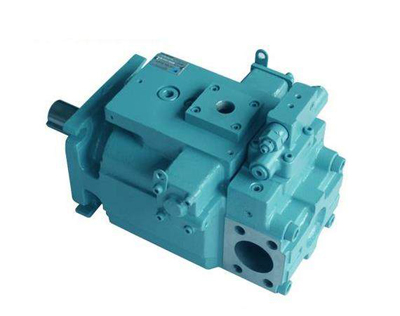
Privacy statement: Your privacy is very important to Us. Our company promises not to disclose your personal information to any external company with out your explicit permission.

First, what is the phenomenon of hydraulic pump trapping oil?
The closed working volume of the hydraulic pump forms a closed volume during the transfer to the pressure chamber after the oil is filled. If the size of the closed volume changes, when the dead volume changes from large to small, the oil in it is squeezed, the pressure rises sharply, the bearing is subjected to periodic pressure shock, and the oil is heated; When the volume is changed from small to large, vacuum is generated due to no oil replenishment, causing cavitation and noise. This phenomenon of pressure shock and cavitation caused by changes in the size of the closed volume is called trapped oil.
The trapped oil phenomenon will seriously affect the service life of the pump. In principle, the hydraulic pump will produce trapped oil.
Second, the hazards of hydraulic pump trapped oil phenomenon
The trapped oil phenomenon of the hydraulic pump is very harmful. Since the compressibility of the oil is small and the oil trapping area is a sealed volume, the trapped oil is squeezed and forced out from the gap of the mating surface of the part, so that the gear and the bearing are greatly attached. The load, while generating power loss, also raises the oil temperature. When the volume of the trapped oil zone becomes larger, a partial vacuum is formed in the trapped oil zone, gas in the hydraulic oil is precipitated, and oil vaporizes to generate bubbles, which enter the hydraulic system, causing vibration and noise. In addition, the flow rate of the pump is reduced, resulting in an increase in the volatility of the instantaneous flow.
Third, how to eliminate the trapped oil phenomenon of the hydraulic gear oil pump
In the process of meshing the external gear pump, in order to make the gear run smoothly and continuously suck and press oil, the coincidence degree ε of the gear must be greater than 1, that is, before the pair of teeth disengages, the latter pair of teeth have entered. Engage. When the two pairs of teeth are simultaneously engaged, a dead volume is formed between them. With the rotation of the gear, the closed volume first becomes larger and smaller, and then becomes smaller and larger. Therefore, the gear pump has a trapped oil phenomenon.
In order to eliminate the trapped oil phenomenon, the groove is often opened and unloaded on the front and rear cover plates or floating bushings (floating side plates) of the pump, so that the dead volume is limited to a minimum, and the volume is changed from large to small to communicate with the oil pressure chamber, and the volume is small. When it becomes larger, it communicates with the oil suction chamber.
Fourth, how to eliminate the oil trap phenomenon of the hydraulic blade pump?
In the action vane pump, because the angle between the arc portion of the stator> the angle between the distribution window and the angle between the two blades, there is a closed volume between the suction and pressure distribution windows, but the volume does not change. So there will be no trapped oil. However, since the arc curve on the stator and its central angle cannot be made very accurate, a slight oil trap may still occur. In order to overcome the hazard of the trapped oil phenomenon, a triangular groove with a triangular cross section is often opened at the front end of the oil pressure window of the oil distribution plate, and at the same time, the pressure sudden change in the oil chamber is reduced, and the pulsation and noise of the output pressure are reduced. This slot is called a damping groove.
5. How to eliminate the trapped oil phenomenon of the hydraulic piston pump?
In the axial piston pump, due to the spacing of the suction and pressure oil distribution windows ≥ the length of the bottom window of the cylinder plunger hole, the sealing work at the bottom of the plunger before leaving the suction (pressure) oil window to reach the pressure (suction) oil window The volume will vary, so the axial piston pump is trapped. People often use this to make the bottom volume of the plunger pre-compress (pre-expansion), and then communicate with the pressure chamber (suction chamber) when the pressure rises (lower) closes or reaches the pressure of the pressure chamber (suction chamber). First, it slows down the sudden change of pressure, reduces vibration and reduces noise.
Письмо этому поставщику
мобильный сайт


Privacy statement: Your privacy is very important to Us. Our company promises not to disclose your personal information to any external company with out your explicit permission.

Fill in more information so that we can get in touch with you faster
Privacy statement: Your privacy is very important to Us. Our company promises not to disclose your personal information to any external company with out your explicit permission.